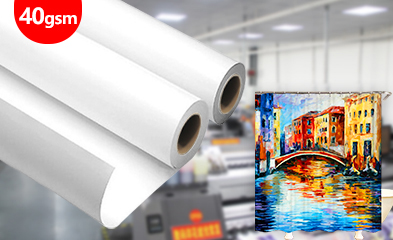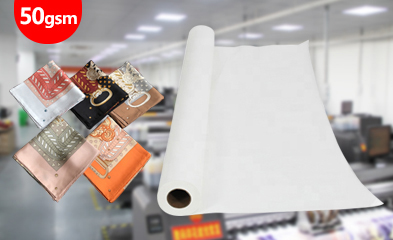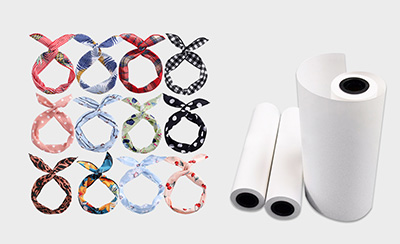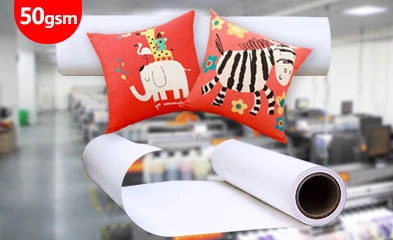HOT SALE
APPLICATION
Phone:+86-15215969856 E-Mail: 396838165@qq.com
Digital textile printing creates vibrant, intricate designs efficiently using sublimation ink, which transforms fabrics into stunning art. Selecting the right ink, considering compatibility and environmental standards, is key to achieving high-quality, durable prints.
Key Factors to Consider When Selecting Sublimation Ink
Selecting sublimation inks requires evaluating key factors to ensure high-quality prints, long-term durability, and customer satisfaction in digital printing projects.
Compatibility with Printers and Substrates
The success of sublimation printing depends on printer compatibility as its fundamental base. The optimal performance of different printer models depends on their required ink formulations. The Sublimation Ink (High density) Color: CY, MG, YL, BK Used For: Epson I3200 nozzle (more than 8nozzle) demonstrates how printers need customized inks for their specific configurations. The Sublimation Ink (High density) Color: CY, MG, YL, BK Used For: Atexco Kyocera nozzle demonstrates that ink formulations need to match the printer technology for proper function.
The process of ink transfer depends equally on substrate compatibility because different materials need specific ink characteristics to achieve their best printing results. The combination of ink chemical properties with substrate material composition controls both printing success rates and color output quality.
Color Vibrancy and Print Quality
The ability to reproduce colors accurately distinguishes professional work from unprofessional attempts. Professional sublimation inks need to maintain their color range stability when printing under various conditions. Professional printers need to select inks which achieve wide color gamut and vivid colors and maintain professional black coverage levels after transfer.
Print quality requires more than accurate color reproduction to achieve success. The final product quality depends on three essential elements which include resolution clarity and gradient smoothness and detail preservation.
Drying Time and Transfer Efficiency
The operation of an efficient workflow depends on correct drying times and transfer characteristics. The ink demonstrates professional standards for sublimation printing because it shows excellent flow and prints 20 meters at 360dpi without interruption while maintaining its integrity through partial holes during long printing operations.
The efficiency of transfer operations determines how well a process produces results while staying within budget. The right ink transfer rate enables businesses to minimize waste while achieving uniform results during extended production operations.
Resistance to Fading and Washing
The actual quality of sublimation inks becomes evident through durability testing procedures. Professional-grade inks must pass multiple tests to verify their ability to last. The Sunproof Level 6 and Washproof Level 4-5 ratings of textile materials after transfer demonstrate the high durability standards which quality sublimation inks meet to maintain customer satisfaction and defend brand reputation.
The requirement for fade resistance becomes essential for outdoor use and items that need frequent washing because it determines how well the color will last throughout their useful life and customer satisfaction.
Environmental and Safety Standards
The development of modern sublimation inks focuses on environmental sustainability while maintaining their operational capabilities. The industry now uses environmentally friendly solvents which provide safe and non-toxic printing solutions that defend both printing personnel and product users.
The organization maintains regulatory compliance through safety certifications and environmental compliance which also protect workers and the environment.
Types of Sublimation Ink Available on the Market
Printers can select the right sublimation ink category through their knowledge of different ink types which match their production needs.
Water-Based vs. Solvent-Based Inks
The environmental benefits of water-based sublimation inks together with their easy handling characteristics make them appropriate for standard applications. The ink formulations deliver superior color accuracy while ensuring safe working conditions in the workplace.
The solvent-based alternatives provide better durability and specific performance features which suit challenging applications. The selection between these options depends on the particular needs of your project and environmental factors.
Dye Sublimation Inks for Different Applications
The development of ink formulations for specific applications enables better performance on particular materials which serve particular purposes. The CY MG YL BK color set functions for Epson I3200 nozzles which operate between 2 and 4 nozzles.
Specialized formulations exist to solve specific problems which include synthetic fabric printing and ceramic decoration and metal substrate applications through their unique chemical properties.
Differences Between OEM and Third-Party Inks
Original Equipment Manufacturer (OEM) inks provide guaranteed compatibility and consistent performance but often come with premium pricing. The testing process for these formulations includes detailed printer model evaluation to achieve maximum performance results.
Third-party alternatives provide affordable solutions which deliver satisfactory quality standards. The selection process for these options requires both compatibility verification and performance testing to prevent potential problems.
Common Challenges Faced by Beginners in Sublimation Printing
New practitioners face particular challenges which they can handle effectively through acquiring sufficient knowledge and preparation.
Ink Clogging and Printer Maintenance Issues
The performance of printers depends heavily on ink viscosity and storage environment conditions. The test demonstrates temperature stability requirements for quality inks because they need to operate between 6-8 degrees and 35 degrees without clogging or flow disruptions.
Most clogging problems can be prevented through scheduled maintenance and correct ink management which also helps printers last longer and produce better prints.
Color Mismatch Between Screen and Final Output
Color management demands knowledge about how digital displays interact with ink properties and material characteristics of printing substrates. The process of color profiling and calibration helps reduce the difference between predicted results and actual outcomes.
The implementation of monitor calibration and ICC profiles and test printing protocols enables organizations to create standardized color reproduction workflows which enhance precision and minimize material loss.
Issues with Transfer Consistency on Various Materials
The transfer process needs specific parameter adjustments based on the substrate material for achieving optimal results. The transfer quality depends on temperature and pressure and timing settings which need individual optimization for different material types.
The process of systematic testing combined with documentation of successful parameter combinations enables production efficiency and delivers uniform results between various projects.
How to Maintain Print Quality with the Right Sublimation Ink
Quality maintenance depends on proper storage practices and equipment maintenance and operational procedures which help protect ink quality and printer operation.
Storage Conditions for Preserving Ink Quality
The storage environment needs proper conditions to protect ink chemistry which results in longer product shelf life. The storage environment needs temperature control and humidity management and light protection to stop chemical breakdown that damages print quality and color accuracy.
The process of container sealing together with contamination prevention helps protect ink quality while inventory rotation provides access to new supplies for peak performance.
Regular Printer Cleaning and Calibration
The implementation of scheduled maintenance systems helps prevent equipment performance deterioration while it extends the operational life of equipment. The cleaning process removes accumulated residue while calibration procedures help preserve both color precision and printing quality.
The use of professional maintenance tools together with approved cleaning solutions enables proper procedures that protect all sensitive printer parts.
Matching Ink Type with Heat Press Settings
The process of transfer optimization needs ink properties to match with heat press operating parameters. The optimal results depend on ink formulations which require precise temperature and pressure and timing settings.
The documentation of successful parameter combinations leads to development of dependable workflows which enhance operational speed and minimize unnecessary testing.
Introducing Changfa Digital as a Trusted Supplier
Professional sublimation printing needs suppliers who maintain reliable operations and deliver full support to meet industry requirements.
Comprehensive Product Range for Sublimation Printing
Changfa Digital operates as a seasoned sublimation paper manufacturer which has provided sublimation paper solutions to customers for more than 15 years. The company’s long history of operation shows its ability to understand sublimation printing needs and customer requirements in the market.
Changfa Digital operates as a sublimation paper manufacturer and digital printing service which functions as a factory that produces sublimation papers through base paper processing and coating and slitting operations. The company maintains complete control over production through vertical integration which enables them to deliver complete solutions for sublimation printing requirements.
Conclusion
In conclusion, choosing the right sublimation ink is essential for vibrant, durable prints in digital textile printing. Beginners should prioritize printer and substrate compatibility, color accuracy, transfer efficiency, and environmental standards. Understanding ink types and addressing challenges like clogging and color mismatches through proper maintenance and calibration ensures consistent results. Partnering with reliable suppliers like Changfa Digital and following best practices for ink storage and equipment care will help beginners achieve professional-quality prints efficiently.
FAQs
Q1: What is the shelf life of sublimation ink?
A: The storage of sublimation inks under dry conditions with low temperatures protects them from degradation for 12 to 24 months. The storage duration of unopened cartridges exceeds that of opened cartridges because proper sealing methods stop both contamination and evaporation that degrades ink quality.
Q2: Any sublimation ink can I use with my printer?
A: The compatibility of sublimation inks depends on your printer model and nozzle configuration. Using inks that are not compatible with your printer will result in clogged nozzles and poor print quality and potentially damage your printer. Before making a purchase check ink compatibility through verification of viscosity and chemical composition.
Q3: Why are my printed colors not matching what I see on screen?
A: The screen and print color differences stem from multiple elements which include monitor calibration and color profiles and substrate characteristics and transfer parameter settings. Your final transfers will display more accurate colors through proper color management which involves ICC profiles and monitor calibration and test printing.
















